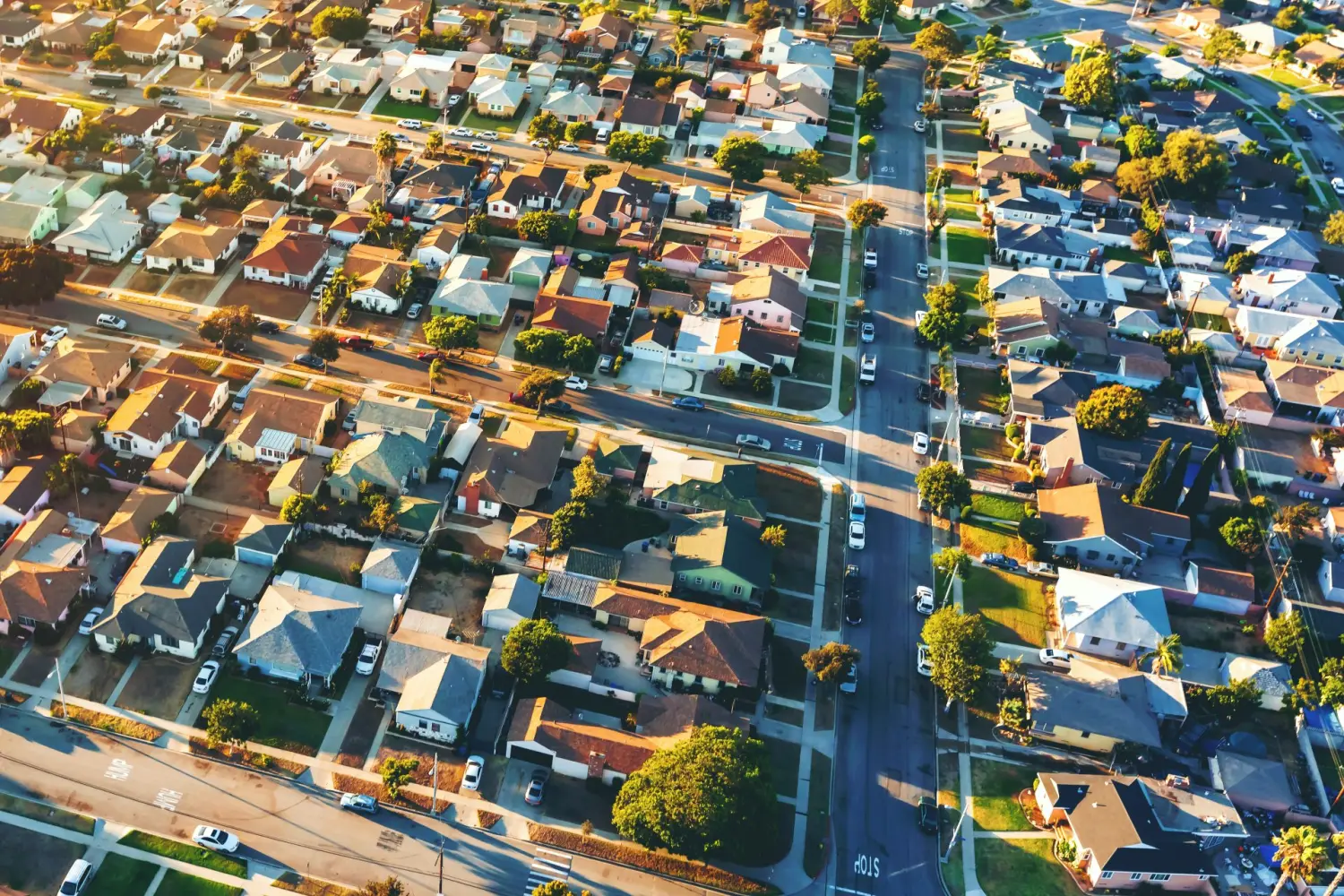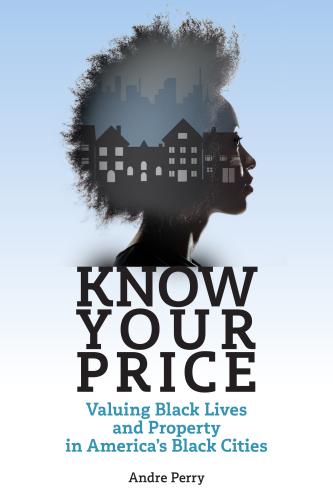In September, Freddie Mac released a groundbreaking analysis of the U.S. home appraisal industry. Consistent with concerns raised by critics, they found that homes in Black and Latino or Hispanic neighborhoods are much more likely than homes in white neighborhoods to be valued below what a buyer has offered to pay.
This research brief examines these findings in the context of our own studies on the devaluation of housing in Black neighborhoods and the wider literature. First, we summarize our research and discuss objections to the interpretation of our findings raised by critics and why these objections do not hold up to scrutiny. Next, we introduce and summarize the new research on appraisals and then situate those findings in the larger literature on discrimination in housing markets. We conclude with the issues we hope to see explored in future research.
Summarizing our research
In 2018, we published a report called “The devaluation of assets in Black neighborhoods: The case of residential property,” with our co-author David Harshbarger. That report sought to explain variation in residential property values across neighborhoods and asked whether homes were valued differently based on the number of Black residents.
We found that Black neighborhoods were associated with much lower property values overall, and only some of this effect can be explained by physical characteristics and neighborhood amenities.
Median home values in majority Black census tracts are 55% lower than median home values in non-Latino or Hispanic white census tracts. Part of this difference is attributable to quality differences between the housing stock. Lower wealth in Black communities means that homes in majority Black neighborhoods tend to be older, smaller, and more likely to be attached than homes in neighborhoods with few or no Black people. Lower wealth and lower home values further hinder the ability of Black homeowners to pay for structural improvements to the home and access mortgage refinancing to pay for renovations.
There are also differences in neighborhood quality that show up in housing price differences. Local schools are often less desirable—at least as measured by publicly available test scores accessible to home buyers—in majority Black neighborhoods than in non-Black neighborhoods. Some other characteristics of Black neighborhoods are more desirable, such as access to public transportation and proximity to local stores, but on average, they do not make up for the less desirable features. These structural and neighborhood characteristics explain some of the value penalty to housing in Black neighborhoods, which shrinks to 23% from 55% after adjusting for these factors.
That still leaves a lot of lost value. We estimate that losses amount to $48,000 per home and $156 billion cumulatively in majority Black neighborhoods.
The question is: What explains this? We don’t know with any precision. In our paper, we reviewed literature on racial bias and pointed to its potential as an explanation, writing: “Our findings are generally consistent with the widespread presence of anti-Black bias.” We left it for future work to explore some of the relevant mechanisms that link bias to valuations and quantify their importance.
Is it just class? A reply to critics
Most scholars, journalists, and practitioners in the field have embraced our work, but not surprisingly, there has been criticism. The most in-depth review and critique of our work has come from two scholars at the American Enterprise Institute, Edward Pinto and Tobias Peter. They downloaded publicly available data on U.S. neighborhoods, reran our analysis, and got the same results. Yet, they have raised several objections to our methods. We will list and reply to their main objections.
First, in a version of their critique published in March 2021, they make two main points. First, they argue that our analysis omits the buying power of neighborhood residents. In other words, homes are worth less in majority Black neighborhoods because residents can’t afford to pay more. One problem with this analysis is that housing can be purchased by non-residents, who can either move into the home or rent it. Using our 23% estimate as a benchmark, they show that grouping neighborhoods into income bins lowers the estimate to 16%. Doing this income grouping and replacing all of control variables except households headed by single mothers reduces the estimate further to 9%.
Their result is primarily driven by discarding neighborhoods that fall below 70% percent of metro area median income and above the 110%. In other words, their result is driven by the elimination of rich and poor neighborhoods. Their valuation estimate of 16% or 9% compares middle-class neighborhoods that are primarily Black to those middle-class neighborhoods that have few Black residents, but it ignores poor Black neighborhoods and rich white neighborhoods, which are obviously relevant to real estate markets.
When we include neighborhood median income and educational attainment in the model estimating price per square foot, our devaluation estimate goes from 23% to 22%, as we reported in our original paper.
A second point raised by Pinto and Peter in their March critique is that the socio-economic status of neighborhood residents affects the value of homes. They do not say whether they believe this is a direct effect, which would imply that poor people are undesirable neighbors, or whether it is an indirect effect, which would imply that our observable measures of a neighborhood just cannot capture the subtleties in quality that differentiate rich and poor neighborhoods.
Either way, we test their preferred empirical strategy and find it lacking. When we follow Pinto and Peter’s income-binning method using our fully specified model, but avoid tossing out thousands of neighborhoods, we get the results shown in Figure 1. In some income bins, the effects are somewhat lower (though never below 14%), and in other income bins the devaluation estimate is even higher. If we take their advice and go one step further—and toss out all our control variables except the share of households headed by single mothers, which they argue is particularly important—we get even larger devaluation estimates than our published results (Figure 2).


In other words, their first critique of our paper fails empirically once you include rich and poor neighborhoods.
After sharing these results with them, they published a second version of their critique, using, in part, our data and code, which we shared with them, as they acknowledge. They offered three new critiques:
First, they say that adding two omitted variables weakens our observed relationship between Black neighborhood composition and home values. One of these variables is an index for lending risk (specifically the 2013 Equifax Risk Score). The other is the percentage of approved mortgage loans in each census tract that go to individuals rather than co-applicants. These data are from the 2016 Consumer Financial Protection Bureau’s Home Mortgage Disclosure Act (HMDA) database. They interpret the latter to be an alternative measure of socio-economic status. They claim that the inclusion of the ERS score lowers the devaluation estimate from 23% to 13% and it falls to 8% when including the ERS score and the individual adult borrower share.
There are both theoretical and empirical problems with this approach. First, the ERS index is a proprietary model-derived measure that is methodologically opaque. Not only do scholars not know what model creates the index, we do not even know whether it includes the Black population share as a control. If so, it can hardly be used in our model.
Second the single-applicant share is itself a proxy variable for race. In the HMDA database, 70% of approved Black loan applicants do not have a co-applicant compared to only 50% of approved white applicants. The correlation between the Black population share and the percentage of 2016 applicants who are single-applicants is 0.50. Pinto and Peter justify it by saying that it measures neighborhood socio-economic status, but they do not say why is it a better measure than school test scores, commuting times to work, access to stores, the college attainment rate, median household income, or the percentage of households headed by single mothers, all of which we already analyzed.
An alternative rationale for including the single-applicant share of loan applications is to measure the buying power of residents. Again, median household income would be more relevant, but one could also use the income data from the HMDA database, which has a much stronger correlation with loan value in the HMDA microdata than the number of co-applicants on the loan.
With these concerns in mind, we include the loan-to-income ratio in our models. It is derived from the HMDA database. We use this measure for all transactions in 2016. Replacing the ERS score (which we don’t have access to) with the mean loan-to-value ratio for the census tract brings the devaluation estimate back up to -20% (Model 2 in Table 1). Adding the individual applicant share to the model (the same variable used by Pinto and Peter), brings the estimate to -15% or -16%, much higher than their estimates and closer to our baseline (Model 6).
Another way to approach the issue of omitted variables bias for a complex construct like socio-economic status is to create an index that captures different facets of the construct. Using a single index avoids what statisticians call multicollinearity. Multicollinearity occurs when variables that are highly correlated with each other are used in the same model and the result is usually that the effects are attenuated (or weakened). This is the predictable result of including the single co-applicant share.
As an alternative, we created a more comprehensive measure of socio-economic status using factor analysis, with variables for median household income, the bachelor’s degree or higher education attainment rate, mean capital income, and the loan-to-value ratio.
Our capital income measure is based on ZIP code data from the Internal Revenue Service reported in 2016 for the 2015 tax year. We match ZIP codes to census tracts using the GeoCorr tool from the Missouri Census Data Center. We define capital income as income from capital gains, interest, dividends, business income, partnership income, pensions, and retirement funds. We omit real estate income since we are predicting the value of real estate in the model. Our measure is a proxy for non-real estate wealth, since income from these sources comes from underlying assets that are worth more than their income streams. This variable is statistically significant and explains higher home values but adding it to our original model does not change our devaluation estimates.
Table 1 reports devaluation estimates from six different models, both run using Census home values and Zillow price per square foot values. The first shows our original estimates. The second adds the loan to value ratio. The third uses the SES index from our factor analysis. The fourth omits a variable from our original model used to measure SES (single-mother households) and replaces it with our index. The fifth omits the single-mother variable from our original model, and the sixth includes our original model, the single-applicant share, and the loan-to-value ratio. The effects range from -15% to -29%.
To summarize, there is no compelling evidence that bias from omitted measures of socio-economic status, purchasing power, or even non-real estate wealth have inflated our original estimate of devaluation.

In an additional line of critique, Pinto and Peter argue that socio-economic status differentiates housing values even in neighborhoods with few Black residents. They also state “There can be no devaluation due to racial bias in this sample.” They claim that if some other factor (SES) can explain variation in value in the absence of racial bias, then racial bias must be unimportant to explaining variation in value. The conclusion, however, does not follow logically from the premise. Our original paper and this reply make it clear that homes are undervalued in Black neighborhoods beyond the socio-economic status of the residents. Moreover, it is unclear theoretically why the socio-economic status of residents should matter to the valuation of homes, after adjusting for things that people say they care about, such as school quality, walkability, and crime.
It also does not follow that America’s racial politics and history disappear in neighborhoods with no Black residents. Our modelling shows that these neighborhoods are over-valued relative to Black neighborhoods, and we argue that one reason is that Black people have not historically lived in these neighborhoods. Discrimination creates losses and gains when it comes to competitive markets, like housing and restaurants.
One way to partly address the Pinto and Peter’s concern empirically is to consider the neighborhood’s Latino or Hispanic population share. Social science literature finds that Latino or Hispanic residents currently face some discrimination but less than Black residents. There are also very large differences in treatment historically, with Jim Crow uniquely affecting Black Americans and creating hyper-segregated Black neighborhoods but not Latino or Hispanic neighborhoods. While this group has faced less discrimination, Latino or Hispanic Americans have similar socio-economic status as Black Americans, in that Latino or Hispanic adults have a somewhat lower rate of college education than Black adults but slightly higher median income.
When we run our original model but include the Latino or Hispanic population share for the census tract, our devaluation estimates for majority Black neighborhoods actually increases in absolute value from -23% to -28%. The Latino or Hispanic devaluation estimate is -15%. When we include median household income and college education, the Black devaluation estimate is -23% but the Latino or Hispanic estimate falls to -3%. In other words, socio-economic status appears to be playing a much larger role in determining home prices in Latino or Hispanic neighborhoods than in Black neighborhoods. This suggests a potentially large role for anti-Black racial discrimination.
Another way to address uncertainty about model selection is to use machine learning, which refers to a group of statistical algorithms designed to select models and calculate optimal estimates given a set of explanatory variables. We use the Lasso algorithm and implement it in Stata. We give the model all our original variables (including 119 binary variables for the metropolitan areas in our sample) and varying sets of the variables described above. Lasso works like standard regression models in that it estimates coefficients in order to minimize prediction error, but it balances this goal by penalizing models that are overly complex, as measured by additional non-zero coefficients. In short, given a list of variables, Lasso selects the simplest model that offers the best predictive power.
When we give Lasso our original variables, it returns the same coefficients that we reported originally. In this sense, a common machine learning approach selected a nearly identical model to our original model and reported the same result (Table 2).
When we remove the share of families headed by single mothers from the list of variables, Lasso returns devaluation estimates of -29% and -26% for census and Zillow-based values. Adding additional variables to our original list reduces the devaluation estimates slightly, as low as -17% and -19%, unless we include the share of mortgage applications from single applicants. In that case, it drops to -13% and -15% (or one percentage point higher in absolute value if we include non-Latino or Hispanic population shares). The only way to get devaluation estimates as low as those reported by Pinto and Peter is to throw away information.

To conclude this section, the results of our original research are robust to many alternative modeling strategies and theoretical concerns about omitted variables bias. We cannot say if the best possible estimate is -23% or somewhat higher or lower, but we are confident that housing is valued differently in Black neighborhoods, and racial discrimination—in some form or forms—is the best explanation available given current information.
New evidence on appraisals: One link in the chain of devaluation
Fortunately, important new research sheds considerable light on these issues and directly tests whether racial discrimination influences home valuations determined by licensed appraisers.
A team of economists and data scientists at Freddie Mac analyzed more than 12 million appraisals for purchase transactions submitted to Freddie Mac from January 1, 2015, to December 31, 2020 through the Uniform Collateral Data Portal (UCDP). Freddie Mac is a government-sponsored enterprise chartered to buy mortgages from banks in order to lower the cost and increase the supply of residential loans. In practice, their strict standards set the industry norm for what qualifies as an acceptable loan, and they have access to uniquely detailed data on mortgages submitted by banks.
The research team’s main finding is that homes located in majority Black neighborhoods and majority Latino or Hispanic neighborhoods are significantly more likely to have appraisals submitted to Freddie Mac that are below the contract price when compared to homes in majority white (not Latino or Hispanic) neighborhoods. The share of homes under-valued are 7.4% for homes in white neighborhoods, 12.5% in majority Black neighborhoods, and 15.5% in majority Latino or Hispanic neighborhoods.
Readers may wonder whether an appraisal below contract price indicates discrimination and whether that discrimination is against the seller or the neighborhood. The contract price is one agreed to by the buyer and seller. In most markets the transaction would take place as soon as that agreement was reached, but housing is different because an intermediary—usually a bank—has a stake in avoiding loans that reflect an inflated valuation of the underlying property. If Black or Latino or Hispanic buyers routinely bought homes above their “true” price, this would be reflected in lower resale value. The Freddie Mac economists ruled this out, however, by observing no meaningful racial difference in purchase price for recently sold homes, after adjusting for home qualities. Since Black and Latino or Hispanic homebuyers are not overpaying relative to recent sales of the same property, it stands to reason that the contract price is a more accurate reflection of the home’s true value than the appraisal. Thus, the Freddie Mac economists correctly interpret appraisals below the offered contract price as undervaluations.
Of course, the homes and neighborhood conditions in Black and Latino or Hispanic neighborhoods are likely to be different than the homes and conditions in mostly white neighborhoods. The research team accounts for this in models they describe. Unfortunately, they do not disclose the results, but they report that the basic undervaluation pattern remains after they run models that control for the characteristics of the neighborhood and property and even appraiser effects (meaning they adjust for the fact that some appraisers may use algorithms that always over or undervalue relative to the mean appraisal).
The research team does not say whether the race of the buyer predicts lower appraisals relative to the contract price, but they provide strong evidence that appraisers discriminate against majority Black and majority Latino or Hispanic neighborhoods. It would be instructive to ask appraisers to explain their valuations, but it is unlikely any would say they undervalued a home because of the racial composition of the neighborhood, since they are instructed not to do so. From the Freddie Mac analysis, it appears that appraisers choose a set of recently sold homes as comparables that are too low in their valuations.
One significant limitation to this study is that the Freddie Mac researchers define neighborhoods as White even when they are home to diverse populations, so long as 50% or more of residents are white. The problem is that a neighborhood that is 60% White reflects the U.S. population. We found large differences in valuation between a neighborhood that is less than 1% Black and neighborhoods that are 20% to 40% Black. For this reason, the Freddie Mac study almost certainly understates the degree of bias from appraisals.
Discrimination generally and in housing markets
Discriminatory beliefs judge the fitness of an individual for an economic transaction based on group identity, rather than his or her individual attributes. When based on racism, the underlying assumption of discrimination is that the continental origins of one’s genetic ancestors causes some groups to be more or less fit for economic exchange, like the ability to repay loans. Discrimination against Black people has a long history of resting on explicitly racist beliefs about the importance of continental ancestry.
Contemporary versions of racism may or may not rest on the importance of continental ancestry. Some political scientists have argued that “modern racism” has shifted away from biological origins to cultural origins that are not necessarily understood as having a genetic component. At the same time, these studies are profoundly constrained by survey questions that are not well-designed. Using survey data from 2003 and 2004, other scholars have found evidence that large percentages of white adults (about one in five) believe that genetic differences explain some or a great deal of racial differences in education, and these attitudes predict disapproval for public policies that would benefit Black people.
Trends in public opinion are generally in the direction of less racial discrimination. For example, since 1961, Gallup has asked a representative sample of U.S. adults whether they approve of marriages between Black and white people. In 1961, 96% of respondents said no. The majority of white respondents did not approve of Black-white marriage until 1997, but 93% approve as of 2021. Still, despite a notable increase in recent decades, interracial marriage is still relatively uncommon relative to population shares.
Beyond public opinion, there have been several systematic efforts to examine trends in real-world behaviors that result in economic disadvantage for Black people. Since 1989, experimental data shows that Black people are around 36% less likely to be called back for a job than a white person with an identical resume and this level of discrimination has not declined.
In housing markets, the discrimination trends are mixed, according to a comprehensive meta-analysis of mostly experimental literature published in recent decades. Real estate agents, landlords, and homeowners exhibit less racial discrimination in recent years (2000 and 2012) than in the late 20th century (1977 and 1989). On the other hand, Black mortgage applicants continue to be rejected at higher rates than their white counterparts or offered higher interest rates after accounting for most (and sometimes all) of the relevant information available to banks. One clever experiment found that Black people are treated by potential lenders as if their credit score was 71 points lower than it actually is. Another study, found significant discrimination in the pre-approval process in Chicago but not Los Angeles. Small banks were more likely to discriminate than large corporations. Finally, a careful examination of court documents related to racial discrimination lawsuits finds that specific institutional practices—designed to profit off low-income Black and Latino or Hispanic households—drove lenders to discriminate.
One type of discrimination is rarely addressed in the literature is the willingness of buyers—not only White buyers—to live in or purchase homes in majority Black or Latino or Hispanic neighborhoods. Since homes are intrinsically linked to their neighborhoods, it is not possible to randomly assign homes to neighborhoods or vice versa. Yet, insight on the causal effect of neighborhood bias can be derived by showing potential home-buyers hypothetical properties and randomly varying the racial composition of the neighborhood while holding constant other characteristics. A team of scholars did this in a recent study. White buyers are roughly 60% less likely to buy a hypothetical home in a Black or Latino or Hispanic neighborhood than a white neighborhood but show no bias against Asian neighborhoods. These results hold constant the level of crime and the quality of schools. The results suggest that white buyers treat Black neighborhoods as synonymous with having high crime and low-quality schools, even when told otherwise.
This type of discrimination is important to keep in mind when assessing results from other studies, like the Freddie Mac one. Homes in Black and Latino or Hispanic neighborhoods are likely depressed twice over: The market price is held down because of bias against the neighborhood, and values can be depressed still further through discrimination in lending markets and appraisals. A holistic approach to understanding racial inequity in housing must consider that both the market price and the final transaction price may fall below the “true” value of the home.
How racial bias can devalue values in Black neighborhoods
To summarize the existing literature, discrimination by individual sellers, landlords, and real estate agents appears to have declined and is now relatively rare, though still detectable in audit studies. Discrimination on the part of lenders appears to persist and appears to be largely explained by lender-specific policies and practices, suggesting that organizational leadership can go a long way to stamping out discriminatory behaviors.
With this new evidence from Freddie Mac, we gain additional confidence that the appraisal industry is contributing to the devaluation of Black neighborhoods. When a home gets a low appraisal in a Black neighborhood, the seller is often forced to lower the final price below the agreed upon price. This suggests a need for comprehensive reforms to the appraisal industry, which, even setting aside potential racial bias, relies upon ad hoc valuation methods that fail to incorporate advances in data science. The normal mechanisms to improve quality are missing in the appraisal industry because small banks are forced—by Freddie Mac and Fannie Mae—to use them. But the mortgage giants have no information on appraiser performance—specifically, how accurately an appraised value hits the true market price. Meanwhile, even that agreed upon “market” price may itself be an undervaluation of the property’s true value because potential buyers undervalue Black and Latino or Hispanic neighborhoods.
When confronted with the mountain of evidence indicating racial discrimination in housing markets, many would like to attribute it to class, wealth inequality, or some other race-neutral cause. But that wish can’t be reconciled with the evidence.
Where to go next
We would like to see more research along the lines of the new Freddie Mac paper. Measuring bias in appraisals is only one piece of the puzzle. Similar work needs to be done for lending and underwriting. Unfortunately, the institutions most suited to provide the data needed to conduct that analysis—Freddie Mac and Fannie Mae—do not have a culture of creating and sharing data for public research.
We would also like to see more research on pre-market factors that drive valuations, such as discrimination against neighborhoods by potential home buyers. This is work we hope to undertake in the future. This line of inquiry may ultimately be the most fruitful; for we believe that institutions would be pressured to reduce or eliminate discrimination if consumers were presented with the data on the true value stored up in Black neighborhoods.
The Brookings Institution is committed to quality, independence, and impact.
We are supported by a diverse array of funders. In line with our values and policies, each Brookings publication represents the sole views of its author(s).









